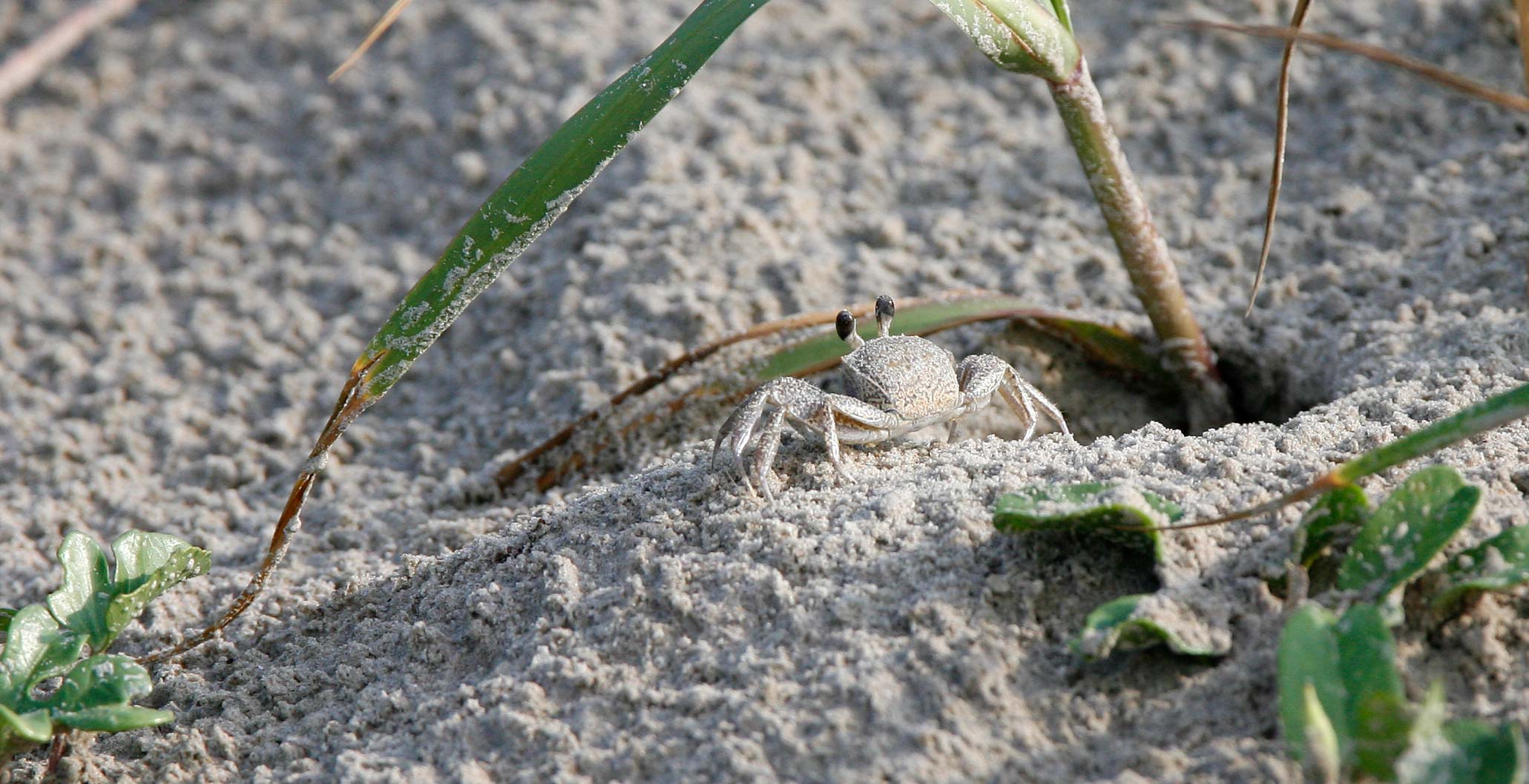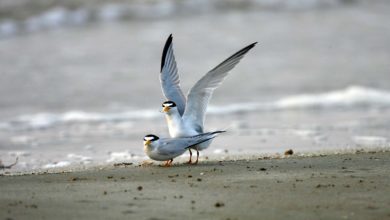If you’ve ever shone a light on the beach at night, you’ve probably seen armies of white crabs scurrying across your path. They were ghost crabs (Ocypode quadrata) on their way to dinner. They feed at night on small mollusks (Donax spp.) and mole crabs (Emerita spp.) where the water meets the beach.
Many remain out and about early in the morning, but unless they are moving it is nearly impossible to separate their mottled sandy carapace from the matching sandy background. Most of the time, the only signs of their presence are the holes they have dug above the high tide line and in the dunes. The holes, often surrounded by excavated sand, vary with the size of the crab. Some crabs are not much larger than a pebble, but they grow to a couple of inches or more. If approached during the day, they will either sit motionless or quickly scurry to their burrow, with their eye stalks poking out just above the sand.
They walk on four pairs of legs, leaving distinct tracks in moist, undisturbed sand. Walking at the edge of the dunes in the early morning, their trails map out the night’s activities.
Although ghost crabs are largely terrestrial, they still depend on gills to breathe. At night, they make a refreshing pilgrimage to the surf, but even during the heat of the day they can extract sufficient water from the moist sand deep in their burrows. Their burrows, which typically have one or two entrances, are dug at an angle and can reach a depth of four feet, so trying to dig them up is usually a futile exercise. Larger, more mature crabs tend to dig deeper burrows farther up the beach and in the dunes. During the winter, they hunker down in their burrows for a few months to wait for spring.
Ghost crabs are hardy and highly flexible in their diet and will feed on organic detritus washed up or discarded on the beach, in addition to their livelier fare. By doing most of their feeding at night, they avoid the hungry shorebirds and gulls that scour the sand for them during the day.
Ghost crabs are among the most common residents of the upper beach and foredune and are considered a bellwether for the health of the coastal community. Ecologists sometimes measure the density of burrows to gauge the impact of visitor traffic during the summer months. (At the same time, leftovers from beachgoers appear to offer a diet supplement for the crabs, making it unclear whether tourists are more of a help or a hindrance to the population.)
References
Branco, B.O., Hillesheim, J.C., Fracasso, H.A., Christoffersen, M.L. & Evangelista, C.L. (2010). Bioecology of the Ghost Crab Ocypode Quadrata (Fabricius, 1787) (Crustacea: Brachyura) compared with other intertideal crabs in the southwestern Atlantic. Journal of Shellfish Research 29(2): 503-512.
Rothchild, S.B. (2004). Beachcomber’s guide to Gulf Coast marine life. Lanham, Maryland: Taylor Trade Publishing.
Schlacher, T.A., de Jager, R. & Nielsen, T. (2011). Vegetation and ghost crabs in coastal dunes as indicators of putative stressors from tourism. Ecological Indicators 11: 284-294.


